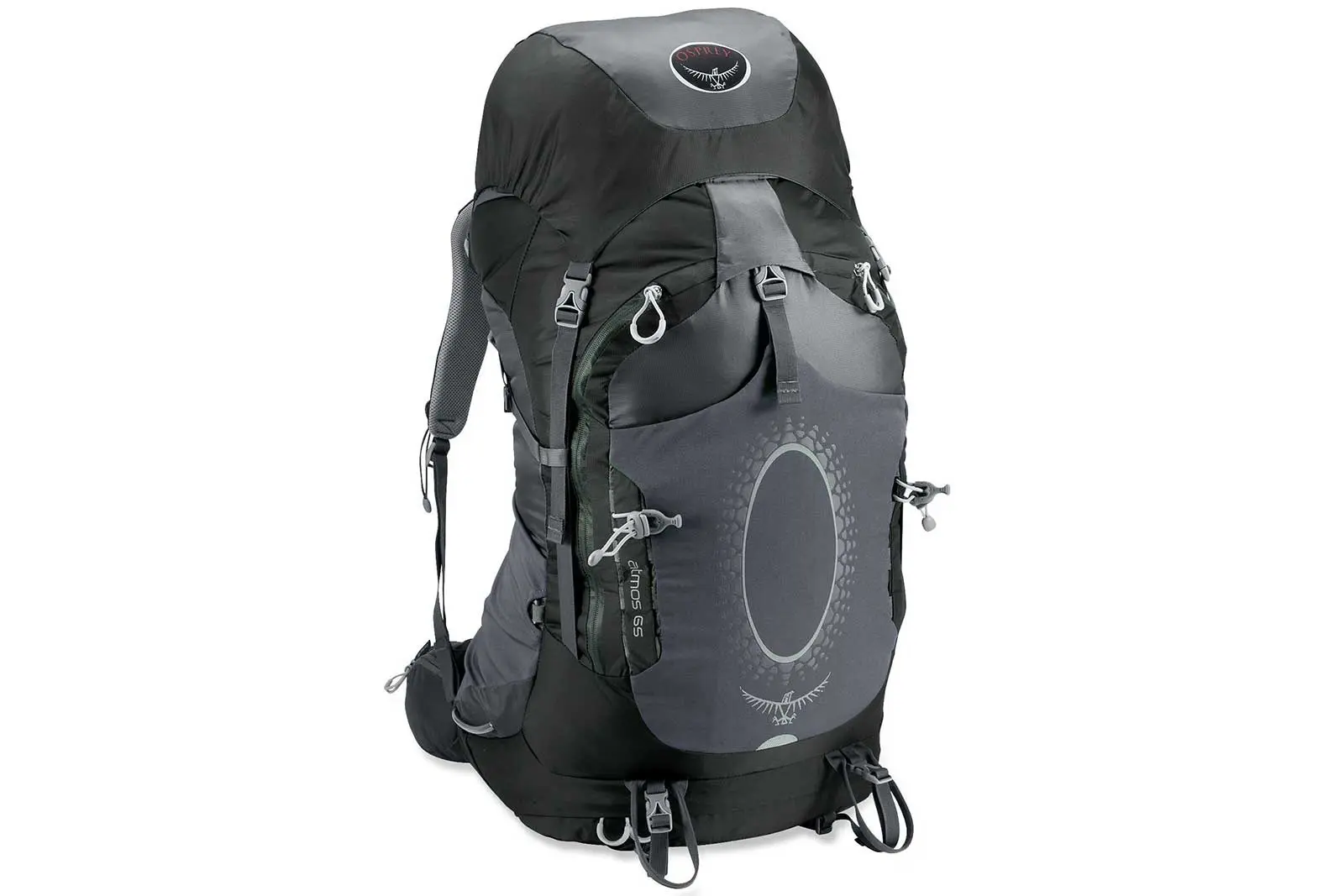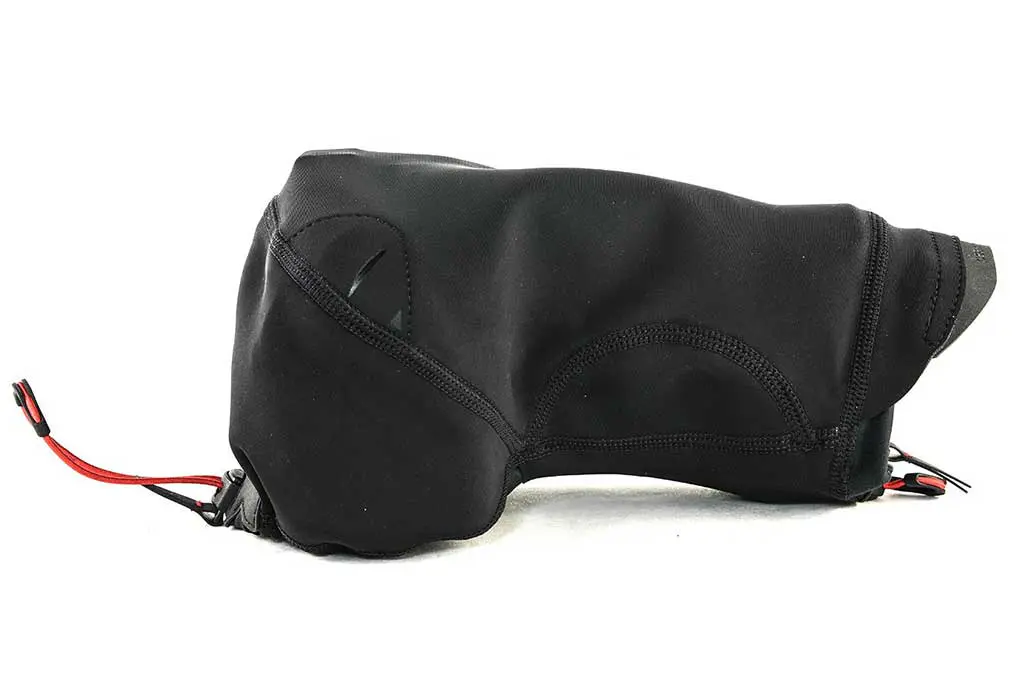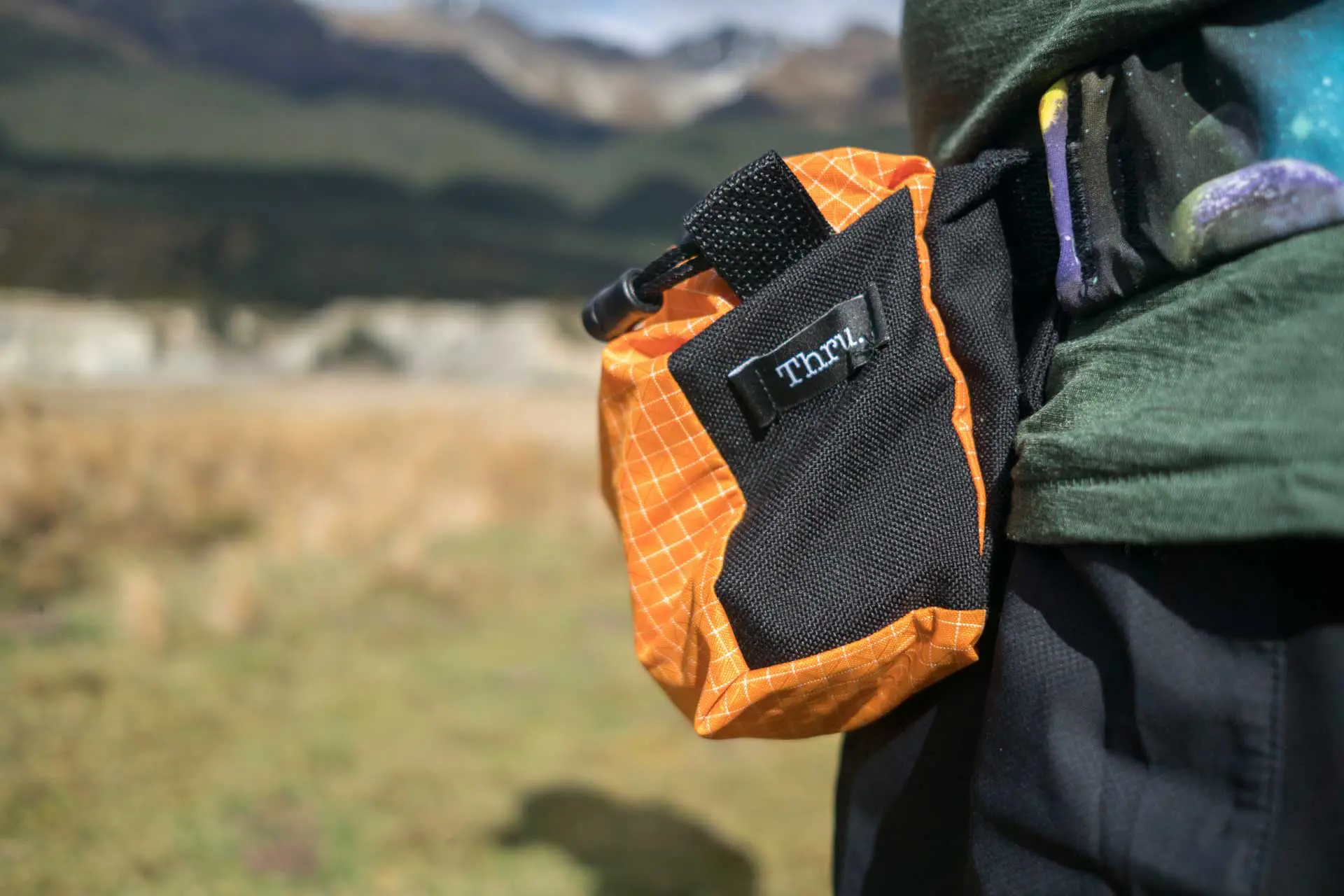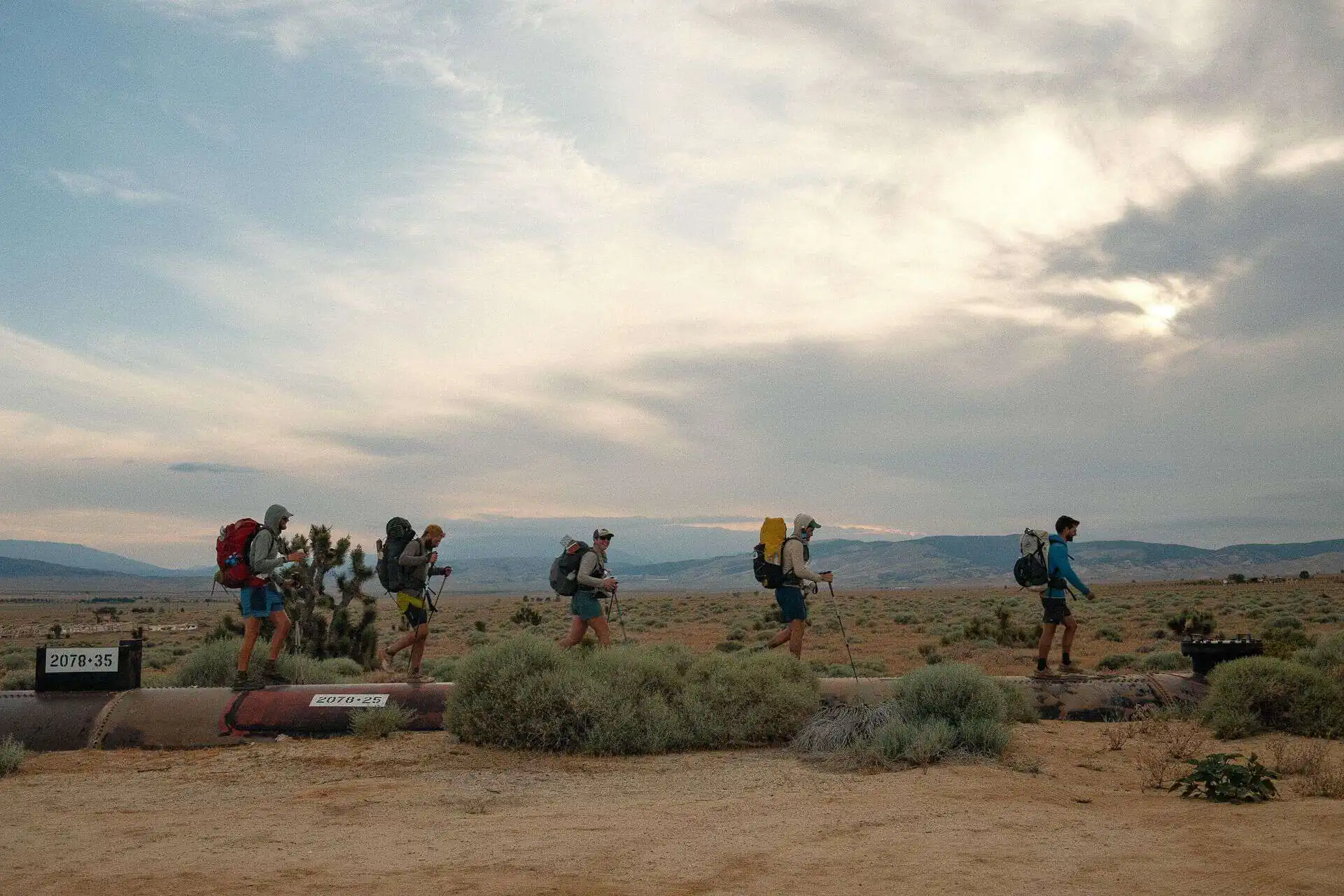Osprey Atmos 65 Backpack Review
The backpack. A hiker’s, traveler’s, wanderer’s, or schoolchild’s most-used piece of gear. You have no spare, you rarely replace it, and it’s always with you – it quickly becomes an extension of your person (congratulations, now you’re a hunchback).
That being said, you should think carefully about your pack, as you will not only be using it every day but also wearing it (i.e., it has to look nice). A pack’s most important measure? How comfortable it is when you are wearing it (with weight in it). It matters not how amazingly awesome a pack’s features are, what incredible things the review of the internet had to say about it, or how ridiculously good-looking it is (contrary to my claim above); if your pack isn’t comfortable, then it’s not a good pack (for you).
After careful consideration of many packs (and the visiting of many an outfitter to try said packs on), I finally decided upon the Osprey Atmos 65 for my Pacific Crest Trail thru-hike (and subsequent travels). What brought me to this conclusion?
Well, for some arbitrary reason, I believed that I needed at least a 55-liter capacity, and I also wanted two points of access for the pack. Additionally, I liked the idea of having two front pockets and a hood with two additional pockets. The reviews weren’t bad, either. The need for a 55-liter capacity, front access, and extra pockets ultimately proved unnecessary as I became more accustomed to living out of the pack over time. Still, I enjoy using this pack, and aside from the time it was replaced due to some busted zippers, I have been happy with its performance.
The Specs
- Frame type: Internal
- Gear capacity: 65 L / 3,967 in³
- Weight: 3 lbs. 9 oz. / 1.59 kg
- Adjustable torso: Yes
- Fits torso: 18 – 21 in / 45 – 53 cm
- Fits waist/hips: 28 – 38 in / 71 – 96 cm
- Material: High-tenacity/mini-ripstop nylon
- Frame material: Metal alloy
- Number of stays: 1 peripheral hoop
- Pack loading: Top
- Pack access: Top / front
- Number of exterior pockets: 8
- Sleeping bag compartment: Yes
- Gender: Men’s
- Adjustable harness: 3 in / 7.5 cm of adjustment.
- AirSpeed suspension: 3D tensioned, breathable mesh back panel
- Fit-On-The-Fly hipbelt: 6 in / 15 cm of adjustment while wearing
- Hydration sleeve: With exits on both sides
- Removable sleeping pad straps
- Removable top pocket
- Sleeping bag compartment: With a removable divider
- Tool attachment: Two ice tool loops and bungee tool tie-offs
- Vertical zip pocket: Two vertical zip front pocket
Note: I have this pack in a medium. It is also available in small (62 L) and large (68 L) sizes. The information below reflects that of the Atmos in a medium (65).
The Good
The Comfort
As I mentioned, comfort is key, and the Osprey Atmos 65 is indeed comfortable. Between the ventilated back, the load capacity, and the strap adjustments, this pack has what’s needed to ensure a smooth and comfortable piggyback. Even when I have this pack filled beyond a reasonable level, it remains (relatively) comfortable as I drag it around. Occasionally, I have to adjust the load lifters after a long and heavy carry, but changing the pack while wearing it is easy.
The Ventilation
Osprey’s AirSpeed suspension back panel does an excellent job of maintaining airflow between you and your pack. Do not make the mistake of thinking that this will somehow prevent your back from becoming a wet, smelly, disgusting mess of filth. What it does is create space for your back to breathe (lessening said mess) and prevent your pack from becoming soaked in your sweat. And it works.
The Front Access
For some reason, I was fixated on getting a pack with a front (or bottom) access zipper. The Atmos 65 meets these criteria. I love being able to access my sleeping bag (or sometimes food bag) from the bottom of the pack. As time went on, I realized that I don’t really need extra access, but it is nice to have. Additionally, I have packed the front access incredibly tightly (the removable divider helps in this regard) and have yet to experience any problems with the zipper or seams.
The Load Capacity
One of the reasons I never regret having this pack is that I can pack it heavily without worrying about being unable to handle the load. The heaviest I have carried this pack is around 55 pounds (leaving Kennedy Meadows on a ten-day stretch in the Sierra with no resupply), and it took it like a champ. I rarely found myself adjusting the straps to loosen them because of the load.
The Bear Canister
This does not apply to everyone, but for those of you dealing with a bear canister, please note that it can be fitted horizontally into this pack. Although this was (for some reason) a significant consideration for me when deciding what pack to buy, I ended up carrying my bear canister vertically in the pack to allow for access to my food without having to remove anything from the pack. Funny how things work out.
The Warranty
I like Osprey – they stand behind their products. Here is their All Mighty Guarantee straight from their website: “Osprey will repair for any reason, free of charge, any damage or defect in our product – whether it was purchased in 1974 or yesterday. If we are unable to perform a functional repair on your pack, we will happily replace it. We proudly stand behind this guarantee, so much so that it bears the signature of company founder and head designer Mike Pfotenhauer.”
The Okay
The Front Pockets
Initially, I was excited to have two additional compartments to organize my belongings. However, I quickly found the two front pockets to be rather useless. With a fully loaded pack, it becomes nearly impossible to put anything bulkier than a map into these things. I usually leave the front pockets empty (especially when the hood is attached) as I find little need for the additional compartmentalized space.
The Weight
This pack is big – sixty-five liters. It also weighs in at over three pounds (1.36 kg), which could easily be your heaviest piece of gear. Our friend, the Atmos, is not what many would call an ultralight pack. That being said, this is the price to be paid for a pack that can withstand a lot of abuse and a heavy load (while remaining comfortable).
The Excessive Straps
This pack has a log of straps. A lot of very long straps. This isn’t necessarily a bad thing, but the straps began to annoy me, so I ended up taking a knife to the pack at a motel in Big Bear, California. (Scissors would have been a better option, and I would likely have one less scar.) I suppose it’s better to begin with more than you need than to wish you had more than you have.
The Bad
The Zippers
The two front pockets are controlled with zippers. Zippers that proved to be useless. On day one of using this pack, one of the zippers broke and rendered its pocket (even more) useless. A few weeks later, the second zipper went out in much the same fashion. Fortunately, I was able to have the pack replaced (after being accused of trying to overload it – the pack was not overloaded during the incidents in question). Also, note that this was not an isolated incident; I spoke to other hikers with Atmos packs who had the same issue with these zippers.
The Side Pockets
The side pockets of the Atmost 65 are functional and spacious, but they lack flexibility. The pocket comes topped with a tight piece of elastic that cannot be stretched much beyond its resting state. I always find myself envious of other packs’ true mesh pockets and their ability to hold whatever was thrown at them. Although you can manage to stretch them a bit, the pockets will disappoint should you attempt to get more than two one-liter water bottles into them.
Conclusion
Yes, the Osprey Atmos 65 is a bit larger and heavier than other packs on the market, but I had no quarrels with it (aside from the front pocket zipper issue) during my Pacific Crest Trail thru-hike. As I said before, comfort is key. This is why you cannot simply say, “This pack is best.” Backpack ratings involve a significant degree of subjectivity.
Be cautious about buying a pack online before you have a chance to try it on in a store. Get out of your hole and visit an outfitter to conduct some hands-on research. Check out the Atmos 65 here.
Affiliate Disclosure: This page may contain affiliate links, which means I may receive small commissions for purchases made via these links at no additional cost to you. This helps pay the bills and keep the site up and running. Thank you for your support!
























Does you know how may Ls the atmos reduces to when the top pack/pocket is removed. Just looking at what options it gives me.
I couldn’t give you an exact answer. Have you tried reaching out to Osprey directly?
Did you find that the ‘anti-gravity’ suspension lived up to the hype? I ask, because as a gentleman of size, my shape has so far prevented any pack’s back-ventilation system to work, however cunningly designed. We live in a world of quick-drying fabrics so it ends up only being an issue for the five minutes after I doff my pack, but it would be good to know that there may be hope with Osprey.
This pack doesn’t have Osprey’s “anti-gravity” suspension, but it does have the “AirSpeed” which I think is what you’re referring to. And if that’s the case, then it definitely lived up to the hype. I always had plenty of airflow and although I think the ULA Packs are great as well, I definitely saw a lot of sweaty packs and backs over the course of the trail.
Anti-Gravity, AirSpeed, they’re all just fancy ways of saying ‘air gap for your sweaty-ass back’. Thanks for the tip on ULA; if I can find an outfitter in the greater LA area that stocks ’em, I’ll give the fit a try.
By the way – I really enjoy your work. Please keep it up, that I may continue to enjoy it, and that you may continue to receive approval from total strangers.
Everything I do is for the approval of strangers :)
*shouts* “Hey, everybody! Listen up! You see this guy? This guy right over here? THIS GUY GETS IT. You guys out there, the ones ain’t gettin’ it? THIS GUY. Fix you right up.”
Was that CA flag patch iron on? Pretty cool addition.
Sewn on. Admittedly, not by me :(
Hey thanks for this great read. I was indecisive on my pack wanting one pack for a wide range of hikes. I could not decide the Aether 70 and the Atmos 65 (large)….I am getting the Atmos. It can indeed take the longer hikes..thanks!
Glad to hear I could help. The atmos is great (but seriously, be careful with the two front pockets). Enjoy!
If you were to do the trail again would you use a 50L or 65L? And do you think you could have gotten away with a 50L in the sierras?
Given the choice (and if it wasn’t going to cost me anything), I would opt to use the 50L. I knew plenty of people with Atmos 50s and they managed just fine (including in the Sierras).
However, I have since purchased Osprey’s Exos 58 and have been happy with it thus far. So, to go a bit beyond answering your question I would (probably) use this pack (if I were to hike again).
Review to come.